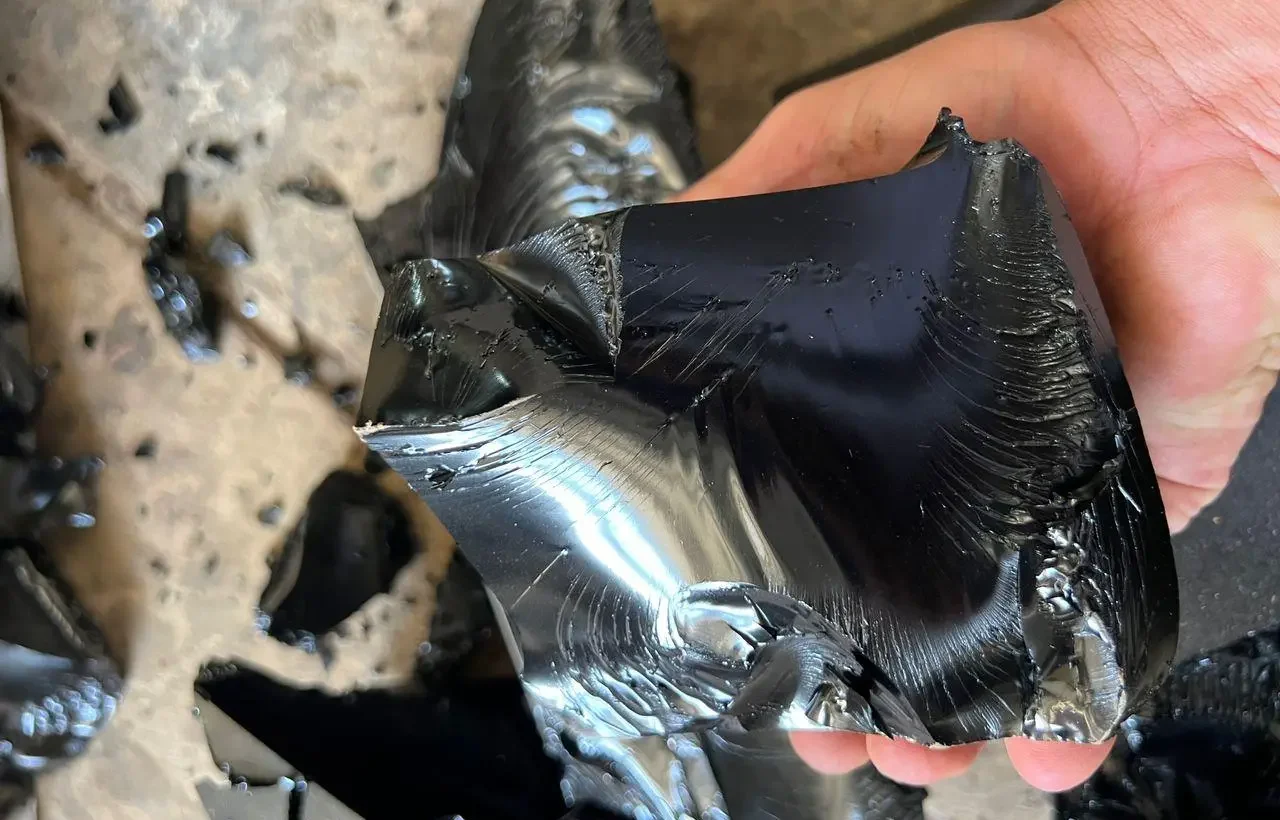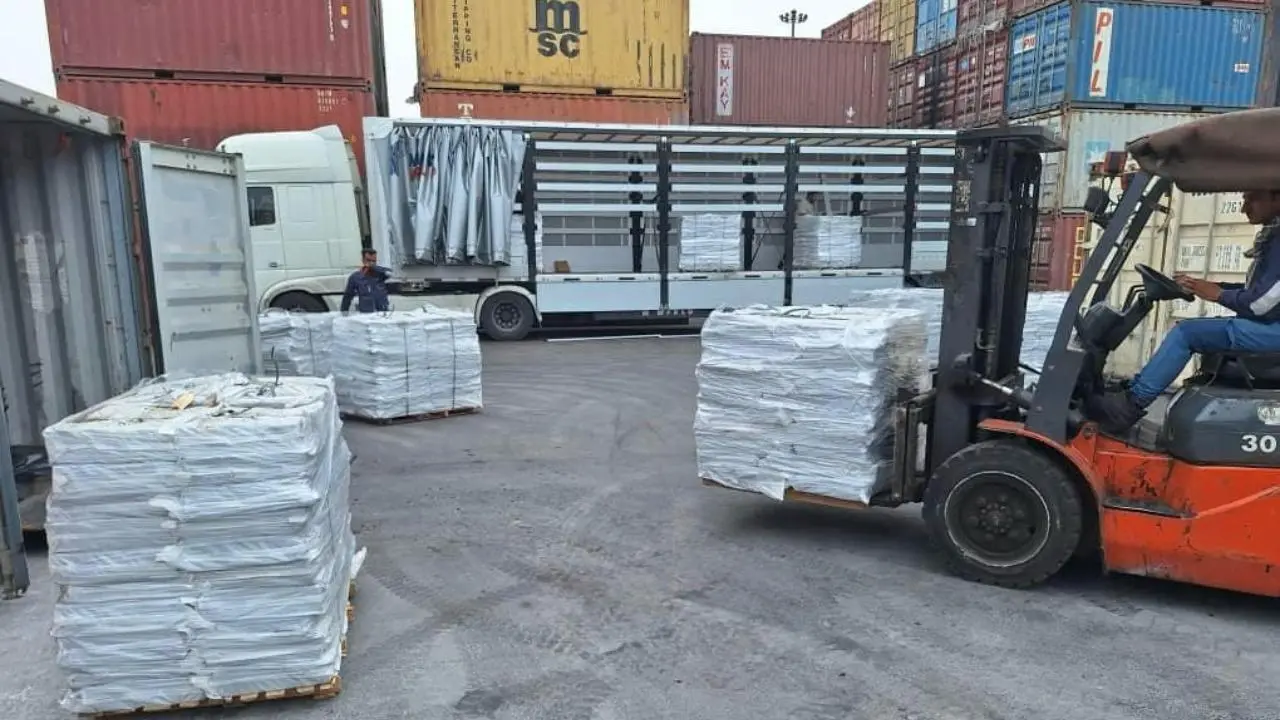 Oxidized Bitumen 115/15
Oxidized Bitumen 115/15
OXIDIZED BITUMEN 115/15
Oxidized Bitumen 115/15, also called Blown Asphalt, is produced by blowing hot air through bitumen 60/70 at 230°C, resulting in a higher penetration index. It is semi-solid and exhibits excellent stability, high softening and flash points, making it ideal for construction. It provides superior adhesive and waterproofing properties when heated. Produced from vacuum bottom (VB) in a controlled air-blowing process, oxidized bitumen becomes harder, more viscous, and less volatile, suitable for uses like roofing asphalts and various industrial applications.
USES OF OXIDIZED BITUMEN 115/15
Oxidized bitumen 115/15 is used as raw material for bitumen coat, fuel, paints, lacquers, varnishes, paper-pulp-board, textile processing, road construction, crack seals and repairs, civil works, construction industries; pavement, sealing and insulating buildings, insulation and isolation bitumen membrane sheet, adhesive, construction materials additive, dust-binding, coating, insulating and impregnating agent, to manufacture rubber and plastic products. Oxidized bitumen 115/15 products are for paving, roofing; also used in asphalt-based paints for corrosion protection of metals, in lining public works structures, adhesives in electrical laminates, the base for synthetic turf; typical uses for bitumen 115/15 include roofing, pipe coating, hydraulic applications. Most bitumen 115/15 used to produce “mopping-grade” roofing asphalts. The special usage of oxidized bitumen 115/15 is bitumen paint manufacturing and oil well drill fluids. Oxidized bitumen 115/15 is used in roofing manufacturing plants to produce shingles, roll goods, built-up roofing felts. It’s used as raw material for bitumen coats, roofing, and insulation also in the Isolation bitumen membrane sheet. Also Oxidized asphalt 150-5 uses in chemical, fuel, paints, lacquers, varnishes, paper-pulpboard, and textile processing. In road construction, pavement, crack seal and repairmen, civil works, roofing also construction. In addition, it uses for sealing and insulating buildings, adhesive, construction materials additive, dust-binding, and coating. With a wide range of uses in insulating and impregnating agents, make rubber and plastic products. The blown asphalt 115/15 products are for paving, and roofing. Also used in asphalt-based paints for corrosion protection of metals, inlining public works structures, adhesives in electrical laminates, and base for synthetic turf. Typical uses for Oxidized Bitumen 115/15 also include roofing, pipe coating, Portland cement pavement, hydraulic applications, and paint manufacturing.
ENVIRONMENTAL & SUSTAINABILITY ADVANTAGES
Oxidized Bitumen 115/15 manufactured by RAHA OIL Co. aligns with modern environmental standards. The controlled oxidation process reduces emissions and enhances product stability, resulting in longer service life and lower maintenance frequency. When applicable, the production process can integrate more energy-efficient technologies to support sustainability goals.
ADDITIONAL INDUSTRIAL APPLICATIONS
Beyond its conventional use in waterproofing and roofing, Oxidized Bitumen 115/15 is also widely applied in:
- Chemical-resistant industrial flooring
- Tank and reservoir lining for acidic or alkaline environments
- Bridge expansion joints
- Heavy-duty corrosion-resistant coatings
- Industrial adhesives for high-temperature bonding
These applications highlight the versatility and resilience of 115/15 in challenging environments.
ADVANTAGES OF BLOWN BITUMEN 115/15
- Quality assured manufacture.
- Conforms to ASTM standards with regards to softening point and penetration.
- Competitive and fair price.
- Prompt and on-time Delivery
- Weatherproof blown asphalt packaging for flexibility of storage.
- Various Kinds of Blown Asphalt packing according to Customer’s Purpose. (Meltable Bag, Kraft Bag, Carton Box, Block, Keg, Drum)
- High Monthly Capacity for producing Oxidized Bitumen
- High Purity Oxidized Bitumen (Blown Asphalt) without Using Gilsonite and any other impurities
- Oxidized Bitumen packages wrapping can be melted in conventional boilers without the need for removal
- Blown Asphalt Carton Boxes packing have a non-stick insider layer that removes easily on Bitumen
- Full Coverage and support
- It is long-lasting
- It is not easily damaged by water
- This bitumen has suitable flexibility which prevents the pavement from cracking
- It has good resistance to change in a chemical reaction
EXTENDED TECHNICAL SPECIFICATIONS
In addition to ASTM D5 and ASTM D36, Oxidized Bitumen 115/15 can be evaluated using the following standards to ensure full performance assessment:
- ASTM D92 – Flash Point
- ASTM D113 – Ductility
- ASTM D2171 – Viscosity
- EN 13304 / EN 13305 – European test standards for oxidized bitumen performance
These additional parameters offer deeper technical insight into the product’s durability, thermal resistance, and suitability for long-term applications.
POLYMER MODIFICATION COMPATIBILITY
Oxidized Bitumen 115/15 can be blended with performance-enhancing polymers such as SBS (Styrene-Butadiene-Styrene) and EVA (Ethylene-Vinyl Acetate).
This modification improves:
- Flexibility
- Crack resistance
- UV protection
- Long-term adhesion
Polymer-modified oxidized bitumen is frequently used for premium waterproofing membranes and high-performance coatings
KEY DIFFERENCES BETWEEN OXIDIZED BITUMEN 115/15 AND OTHER GRADES
Oxidized Bitumen 115/15 differs from other grades primarily in its hardness, softening point, and applications. It has a softening point around 115°C and penetration of 15 dmm, making it stiffer and more stable at high temperatures compared to softer grades like 85/25 or 95/25, which have lower softening points and higher penetration values. While 115/15 is ideal for applications requiring high durability, such as roofing, pipe coating, and corrosion protection, softer grades are better suited for projects that need more flexibility, like crack sealants and adhesives.
SURFACE PREPARATION
Before using Oxidized Bitumen 115/15 surfaces must be dry, clean, and free of loose types, curing products, disorders, and slurry. Furthermore, if you use this type of bitumen without cleaning the area bitumen 115/15 will easily remove.
TECHNICAL ADVANTAGES OF BLOWN ASPHALT 115/15
- Durability
- Flexibility
- Water-Resistant
- Chemical Stability
COMPARED TO PAVING GRADE BITUMEN:
- Reduced temperature susceptibility
- Exhibits a more ‘solid’ nature at ambient temperatures
- High penetration index
BLOWN ASPHALT PROPERTIES
Air blowing of vacuum-reduced bitumen causes marked changes in the properties and constitution of the material. Blown Bitumen is harder and has higher softening points than the original material and the changes in physical properties appear to be related to the asphaltene content which increases with the temperature and duration of the blowing process. Analytical data indicate that conversion of the original resins to asphaltenes and the formation of new resins from the oils occur simultaneously. Specs also provide feasible representations of the pathways of bitumen maturation and asphalt deterioration.
MARKET TRENDS & INDUSTRY DEMAND
Oxidized Bitumen 115/15 is increasingly in demand in:
- Hot climate regions, due to its high softening point and thermal stability
- Pipeline and industrial coating sectors
- Waterproofing membrane manufacturing
- High-volume industrial adhesive production
These growing markets demonstrate its adaptability and relevance in modern construction and industrial applications.
QUALITY ASSURANCE & CERTIFICATIONS
RAHA OIL ensures consistent supply through:
- Compliance with ASTM standards
- Availability of COA (Certificate of Analysis) and MSDS upon request
- Optional third-party inspection (SGS, GeoChem, Intertek, etc.) at the buyer’s request
This level of transparency helps assure customers of reliable and repeatable quality.
STORAGE GUIDELINES & SHELF-LIFE
Heating of packaged bitumen is a critical phase in most of the final uses. Typically, the packaged material is heated and melted in boilers out on site. However, control at the heating phase is very important in terms of health and safety as well as in maintaining the quality of the product. Note must be taken of the maximum safe handling temperature of 230 C and this should not be abused. Bitumen is a poor conductor of heat, consequently, control of the heating phase is of paramount importance. The Oxidized Bitumen material should be broken up prior to placement in the boiler. This exposes a larger surface area to the heat and encourages a more even heating regime. Without the larger exposed surface area, aggressive heating at the base and sides of the boiler may well result in localized overheating, altering the characteristics of the RAHA OIL modified bitumen and potentially causing thermal cracking of the bitumen, creating the release of low lash vapors. The flash point of the oxidized bitumen then becomes irrelevant; as these low flash vapors determine the fire risk. Melted bitumen should not be left in the boiler and reheated from cold, as there is then a high potential for localized overheating around the heating area (lack of convection means poor heat transfer) and potential development of a pressurized pocket of low flash vapors. Be aware of the placement of any temperature monitoring or control devices. As a result of the poor thermal conductivity of the bitumen, a thermometer in the bitumen some distance from the heat source could read significantly different (even hundreds of degrees) from the true temperature of the bitumen near the heat source.
To maintain product quality, Oxidized Bitumen 115/15 should be stored under the following conditions:
- Keep in a cool, dry, and covered environment.
- Avoid exposure to direct sunlight for prolonged periods.
- Maintain storage temperature below 50°C.
- Product shelf-life can exceed 12 months if properly stored.
These guidelines help preserve consistency and prevent premature aging.
HEALTH & SAFETY OF BLOWN ASPHLAT 115/15
Workers should wear protective masks, gloves, and goggles during application. The asphalt can be removed from equipment and tools with kerosene or gasoline. Care should be taken when heating Blown Asphalt 115/15 to avoid over heating.
PACKING OF OXIDIZED BITUMEN 115/15
 Packing of Oxidized Bitumen 115/15
Packing of Oxidized Bitumen 115/15
PACKAGING INNOVATION OPTIONS
RAHA OIL offers modern and safer packaging solutions to simplify handling and melting:
- Meltable PE bags (no need for cutting or waste)
- Jumbo / Big Bags for bulk industrial consumers
- Anti-stick coated kraft bags for cleaner melting operations
These packaging formats help reduce labor time, environmental waste, and safety risks during processing.
Bitumen 115/15 is available in 20 & 50 Kg Kraft Paper Bags / Poly Amide Bags, 25 Kg Carton box & 200 Kg Steel Drums. Polyamide melt-able bags whose melting temperature is 160 to 180 C and has a capacity of 25 to 50 kg.
SAFETY & HEATING RECOMMENDATIONS
For safe melting and application:
- Heat gradually to avoid localized overheating.
- Recommended application temperature: 200°C – 230°C.
- Use indirect heating systems such as thermal oil jackets.
- Ensure proper ventilation when melting to avoid accumulation of fumes.
- Operators must wear protective gloves, eyewear, and masks.
Overheating oxidized bitumen may alter its chemical structure and reduce performance.
TECHNICAL DATA SHEET OF OXIDIZED BITUMEN
Oxidized Bitumen 115/15 TEST METHOD UNIT SPECIFICATION
Specific gravity @ 25/25 °c ASTM D70 Kg/cm³ 1.05 approx
Penetration @ 25°c ASTM D5 mm/10 10-20
Softening point °c ASTM D36 °C 110-120
Ductility @ 25°c ASTM D113 cm 1.5 Min
Loss on heating(wt) % ASTM D6 wt % 0.2 max
Flashpoint °c ASTM D92 °C 250 min
Solubility is CS2(wt) % ASTM D4 wt % 99.5 max
Spot test A.a.s.h.o.t102 - Negative
For more information, please Contact our Sales Team.

